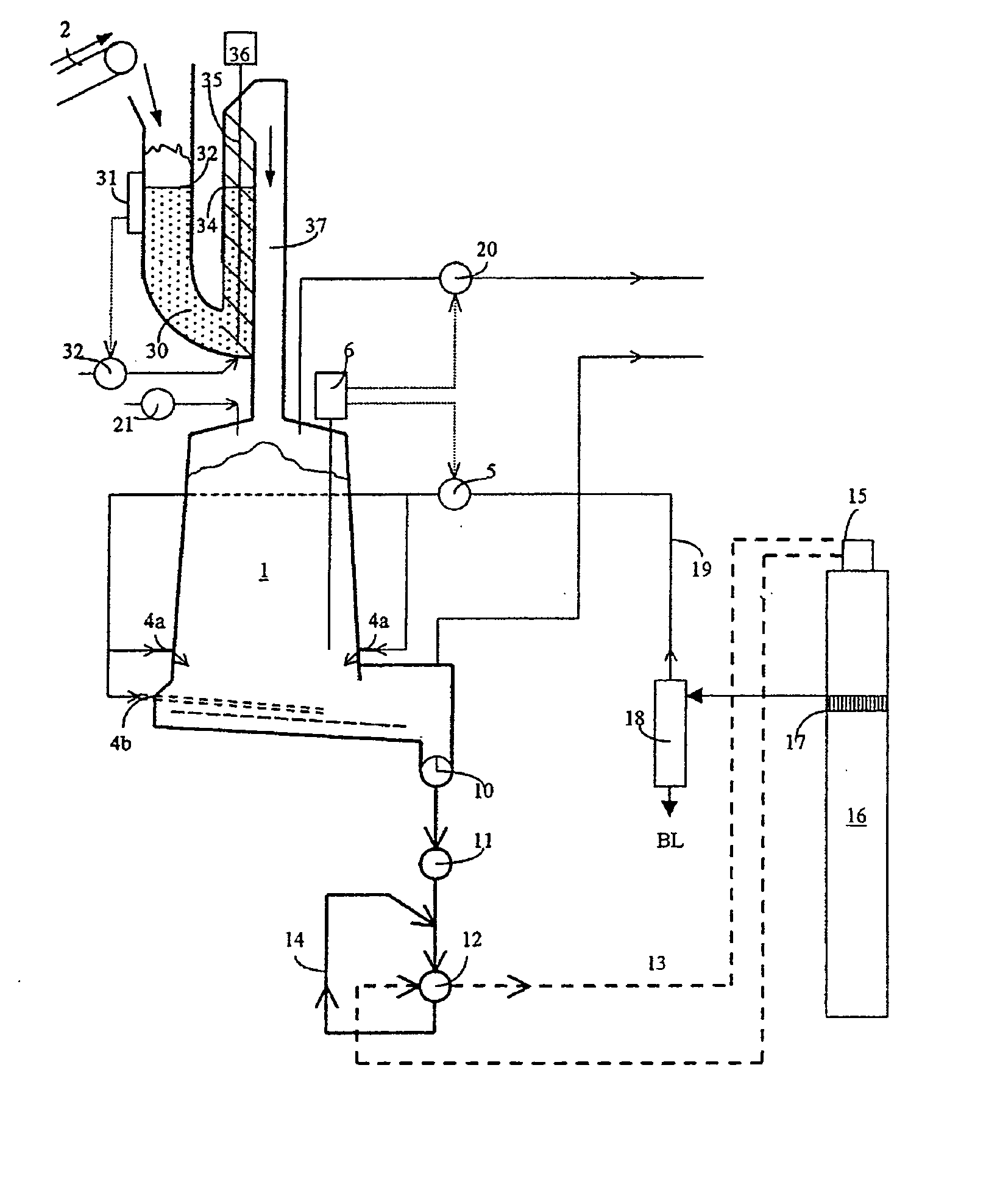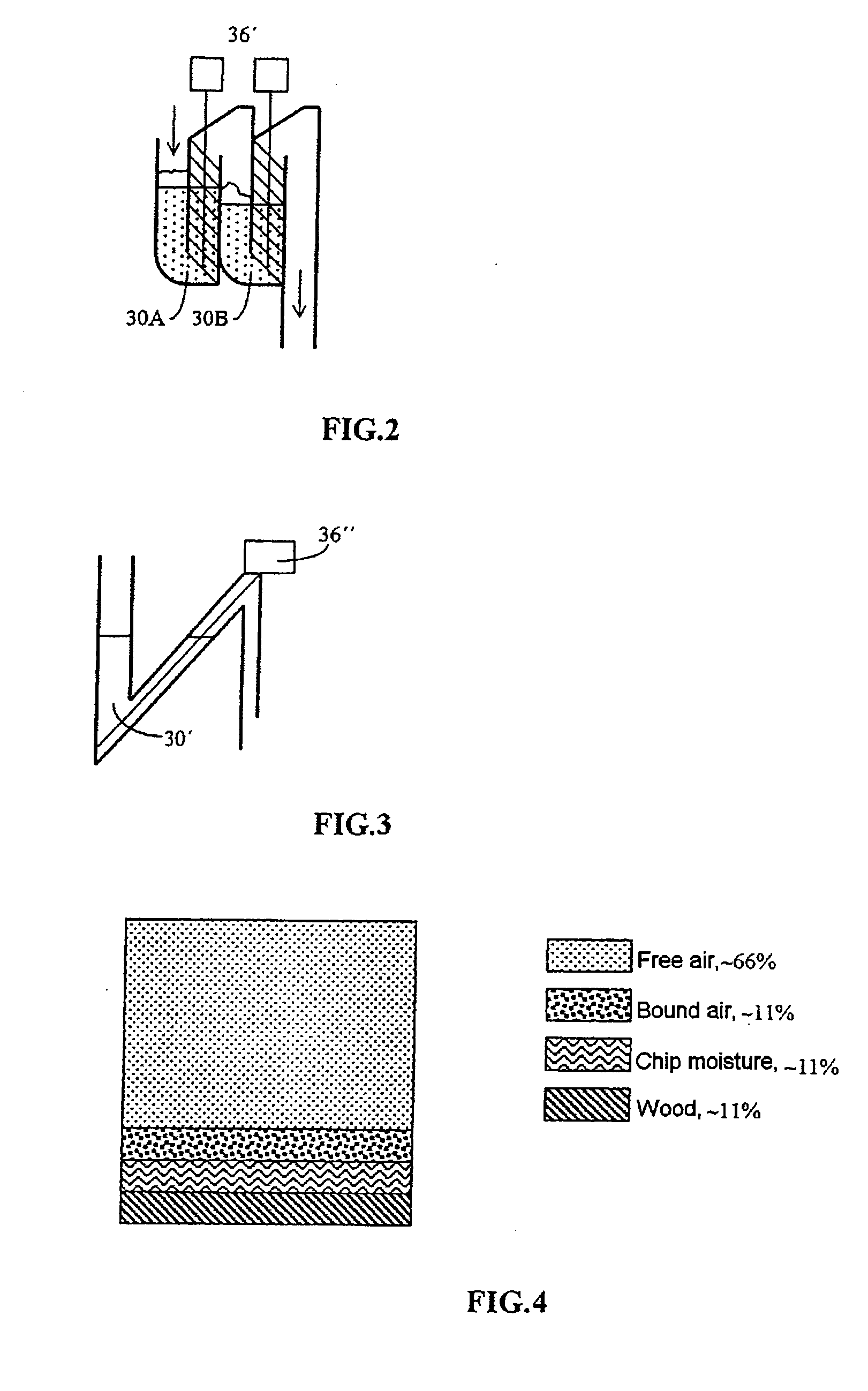Feeding arrangement for feeding of chips to chip bins
a technology for feeding arrangement and chips, which is applied in the direction of digesters, finely divided material pretreatment, textiles and paper, etc., can solve the problems of large steam, no emission of chips from the chip bin, and large volumes of harmful gases to be taken care o
- Summary
- Abstract
- Description
- Claims
- Application Information
AI Technical Summary
Benefits of technology
Problems solved by technology
Method used
Image
Examples
Embodiment Construction
[0026] In FIG. 1 a diagrammatic representation is shown of a chip bin 1 to which cut chips are conveyed by means of a conveyor belt 2 from a chip store (not shown). The chips at this stage have a temperature equivalent to the environment, anything from a few degrees below zero to 20-30° C. (during the warm season). Normally the chips are heated in the chip bin to a level above 80° C., preferably around 100° C., which calls for substantial quantities of steam. The heating with steam serves a number of purposes, firstly to raise the temperature of the chips, but also to expel air and heat bound chip moisture and, to a certain extent, drive off this chip moisture.
[0027] In FIG. 4 a diagrammatic representation is shown of the volume shares of what normally accompanies the chips to the chip bin if the chips are not actively compressed. The free air, i.e. the air lying around and between the chip fragments, constitutes as much as ⅔. Even though active compression of the chips might be ac...
PUM
| Property | Measurement | Unit |
|---|---|---|
| Temperature | aaaaa | aaaaa |
| Temperature | aaaaa | aaaaa |
| Electric charge | aaaaa | aaaaa |
Abstract
Description
Claims
Application Information
 Login to View More
Login to View More - R&D
- Intellectual Property
- Life Sciences
- Materials
- Tech Scout
- Unparalleled Data Quality
- Higher Quality Content
- 60% Fewer Hallucinations
Browse by: Latest US Patents, China's latest patents, Technical Efficacy Thesaurus, Application Domain, Technology Topic, Popular Technical Reports.
© 2025 PatSnap. All rights reserved.Legal|Privacy policy|Modern Slavery Act Transparency Statement|Sitemap|About US| Contact US: help@patsnap.com



